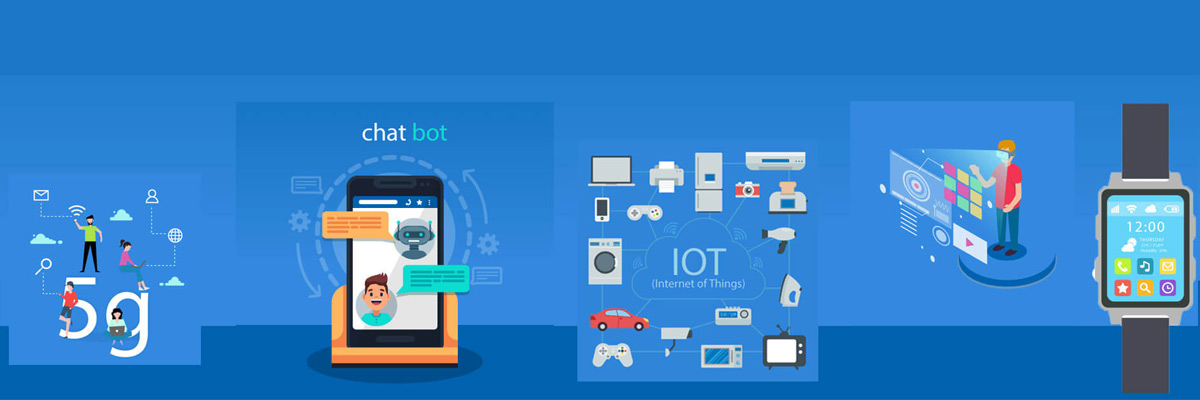The grocery ecosystem has been completely disrupted due to the startup and app culture. As with many service categories, grocery segment has also grabbed the attention of modern-day startup owners. developing a Grocery delivery mobile apps are the latest obsession for the tech world and a lot of activity has been observed particularly in the on-demand grocery delivery app segment.
Lucrative Business Opportunity in Online Grocery Delivery Segment
The on-demand grocery delivery segment is growing at a rapid pace for quite some years, now. The segment registered USD 6 billion dollars in sales revenues in 2012 which is expected to reach about USD 30 billion by 2021.
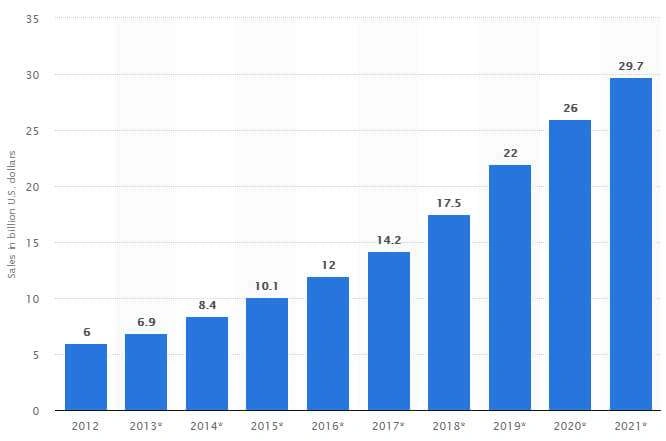
( Source: www.statista.com )
According to recent market surveys and studies, more than 35% of the individuals prefer buying groceries online owing to convenience, on-demand availability and competitive pricing. The shifting trend in the favor of grocery delivery mobile apps paves a great opportunity for startups, traditional grocery stores and tech companies to build their own mobile app.
But how to begin with grocery mobile app development? Before you think of grabbing the massive opportunity in the online grocery delivery segment, it is better to understand the different types of grocery mobile apps and their business models.
Types of Online Grocery Mobile Apps
The online grocery industry is quite competitive. Because there are a number of players in the segment, it is important that you decide on your business model from the beginning. Everything from your operations to capital investment depends on the type of app you are planning to build.
So, you need to be quite careful about which way you want to go. Here are the different types of operational models for a modern grocery delivery mobile app:
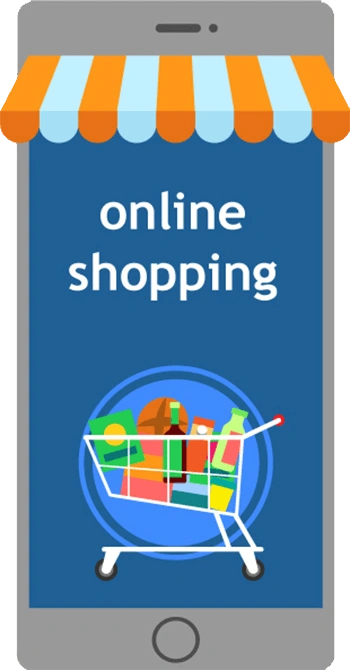
Aggregator Mobile App
If you are looking to launch a grocery mobile app working on aggregator model, you will be required to tie up with local grocery stores. Your app would list nearby grocery stores for a user, and he/she can decide to purchase from any of the stores listed.
All responsibilities including order fulfillment to delivery rests with the individual store and you are just a facilitator serving as a mediation platform between the customer and the store owner.
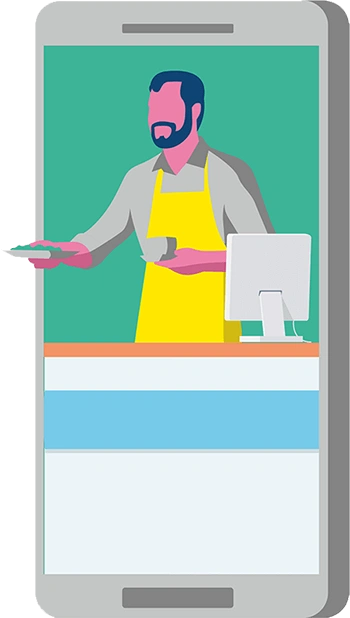
Marketplace Mobile App
A marketplace grocery ordering mobile app is quite similar to an aggregator model. But a business running on the marketplace model has its own fleet of delivery executives. This means your main task is to facilitate order placement and deliver goods to the customers.
Under this model, more responsibility is on the online grocery platform as it needs to have a dedicated fleet of delivery executives.
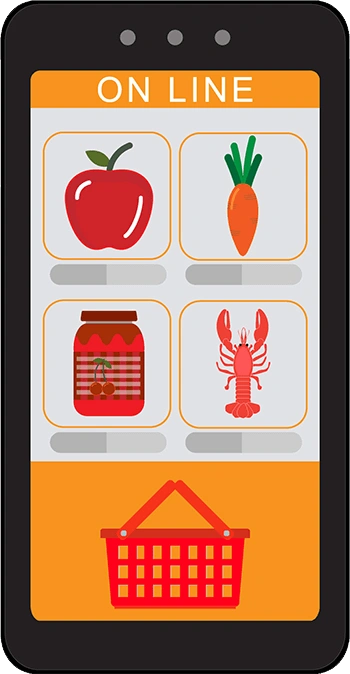
On-demand Mobile App for Standalone Stores
Dedicated grocery ordering and delivery mobile apps for standalone stores are operated by offline stores looking to expand their operations. Traditional stores launch their own mobile app to cater to their customers in a particular region. Customers order groceries online or via the mobile app and the store fulfills the order by delivering the same to the customer’s address.
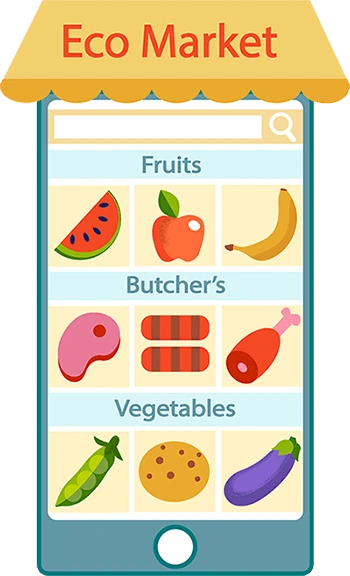
Marketplace Mobile App
These mobile apps are operated by large-scale grocery chains to cater to their customer’s needs in a particular territory, state or country. Customers login via the dedicated app of the grocery chain, order groceries and get the same delivered. These apps are quite similar to apps for a single store but can work for a wide geographical area.
Top Features for a Modern Grocery Delivery Mobile App
Though different types of mobile apps are used by grocery operators, every app requires a basic set of features and functionalities. Any grocery mobile app has four different stakeholders:
1. Customers
2. Grocery Store
3. Delivery Personnel
4. Admin/Operations Team
All these stakeholders require a dedicated app to perform specific operations to fulfill any grocery delivery order. Here are some of the basic features for a dedicated app for customers, stores, delivery executives and administrators:
Cost of Online Grocery Delivery App Development
The cost of grocery mobile app development depends on a lot of factors like features required, type of business models, dedicated resources employed and a lot of other factors. Also, the complexity of the app design, number of dedicated apps required and the country/region.
It is quite hard to ascertain a specific cost for development of grocery delivery mobile app. Hence, it’s better to consult a professional grocery application development company to get exact idea about how to build a grocery app and how much it will cost.
Wrapping Up
If you are looking to develop grocery mobile app, our expert mobile app development team can help. With massive experience of developing, designing and deploying modern grocery mobile apps, we understand the segment in depth to deliver a remarkable solution. Looking to disrupt the grocery domain? Get in touch with our expert team now.


